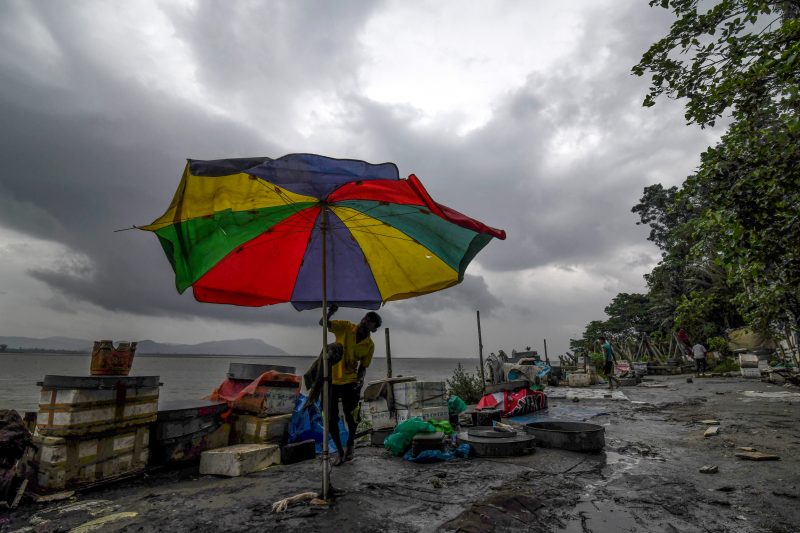Praise for India’s response to devastating cyclone
Cyclone Fani, one of the biggest to hit India in years, tore into Odisha Friday, leaving a trail of devastation across the coastal state of 46 million people (Biju BORO)
New Delhi (AFP) – UN and other experts Saturday praised India for its early warning systems and rapid evacuation of more than 1 million people, which they said helped minimise loss of life from a deadly cyclone that battered its eastern coast.
Cyclone Fani, one of the biggest to hit India in years, tore into Odisha Friday, leaving a trail of devastation across the coastal state of 46 million people before swinging towards Bangladesh.
In 1999 the same state was hit by a devastating 30-hour super-cyclone that saw a storm surge sweep 20 kilometres inland. Unprepared for the scale of the diaster, authorities struggled to evacuate the stricken population and some 10,000 people were killed.
This time, improved forecasting models, public awareness campaigns and well-drilled evacuation plans — backed up by an army of responders and volunteers — has seen Odisha’s inhabitants spared the worst of Fani’s fury.
Only twelve people have been killed by the cyclone in India — which escaped being hit by a major storm surge — and at least 160 injured, local media reported.
As soon as it became clear this week that Fani was on course to hit Odisha, emergency teams began the mammoth task of evacuating those living in low-lying regions, moving 1.2 million residents away from danger areas and in to temporary shelters.
Alerts asking residents to stay indoors and follow the dos and don’ts were issued repeatedly on TV and radio, and broadcast through loudspeakers in public places.
The UN Office for Disaster Risk Reduction (UNDRR) praised the government’s “effective” evacuation, saying it had “saved many lives”.
– New weather models –
The state government in Odisha along with national disaster response teams and volunteers have worked in tandem to carry out evacuations and set up safe shelters.
Workers have been equipped with satellite phones and inflatable boats along with food and medicines to distribute in the storm’s aftermath.
Some 7,000 kitchens catering to 9,000 shelters have been set up, thanks to an army of 45,000 volunteers.
Emergency workers are now focussing on restoring damaged infrastructure, including power and telecom lines, and clearing roads.
Mahesh Palawat, the vice-president of meteorology at private forecaster Skymet, said the early warnings had been vital in allowing authorities to plan in advance.
“From April 25 onwards we (the Indian Meteorological Department and Skymet) had been monitoring the track and intensity of the cyclone continuously, what time it would make landfall and the probable points of landfall,” Palawat told AFP.
Numerical models, adopted by the Indian Meteorological Department (IMD) in 2014 to supplement the more traditional statistical modelling, allowed forecasters to track Fani’s progress and wind profiles in the upper atmosphere.
Denis McClean, a spokesperson for UNISDR, said “the almost pinpoint accuracy” of the early warnings from the IMD had enabled the authorities to “conduct a well-targeted evacuation plan.”
Social media users also lauded the Indian authorities for averting a mass human disaster, despite the fact that a densely populated region was in the eye of the storm.
“Credit goes to #India authorities for their aggressive pre-impact response, including massive evacuations,” wrote Josh Morgerman, a US-based cyclone expert.
Disclaimer: Validity of the above story is for 7 Days from original date of publishing. Source: AFP.


